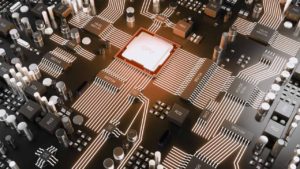MIL-STD-461 CS101 Test Method Review Authored By: Soydan Cakir, TUBITAK UME, soydan.cakir@tubitak.gov.tr Steve Ferguson, Compliance Direction LLC, stevef@compliancedirection.com Osman Sen, TUBITAK UME, osman.sen@tubitak.gov.tr Murat Celep, TUBITAK UME, murat.celep@tubitak.gov.tr 1. Introduction Discussions with various members of the electromagnetic compatibility (EMC) … [Read more...]
Review of MIL-STD-464 Requirements
Introduction My reviews have covered MIL-STD-461 over the past few months so it’s time to step up to the system requirements. We realize that the MIL-STD-461 requirements apply to equipment items and subsystems as stated in MIL-STD-464. Revision “C” is the current edition, but a review is a little overdue. In this review, the discussion will focus on the various requirements … [Read more...]
Review of MIL-STD-461 General Requirements
Introduction Recently I noted that my series on MIL-STD-461 test methods was closing since I had accomplished a review on each of the test methods. It seems appropriate to continue with a review of General Requirements – those things common to the various test methods. These requirements have been around since the first release of MIL-STD-461 and MIL-STD-462 dealing with … [Read more...]
Review of MIL-STD-461 CS116 Damped Sinusoidal Transients, Cables and Power Leads
Introduction In this article, I am delving into the evolvement of CS116 testing, the background, the purpose and how the testing is approached today. The test title is, “Conducted Susceptibility, Damped Sinusoidal Transients, Cables and Power Leads”. MIL-STD-461 assigns applicability to a broad variety of applications and states the purpose is to verify the ability of the … [Read more...]
Review of MIL-STD-461 RE103 Antenna Spurious and Harmonic Outputs
Introduction Technology frequently embeds transmitters in a myriad of devices to support an Internet Of Things (IoT) concept from identification to condition-based actions, and this IoT approach includes defense operations. Devices may include multiple transmitters that a few years ago did not include communications of any sort. Inclusion of RF transmitters has prompted a … [Read more...]
Review of MIL-STD-461 CS115 Impulse Excitation; CS109 Structure Current; RS105 Transient Electromagnetic Field
Introduction I realized earlier that my reviews have covered most of the MIL-STD-461 test methods in the past year, so I decided to prepare this to capture those items that have been omitted in prior articles. Since this is a series close out and the topics have little in common, I’ll take on each instead of using commonality to group multiple test methods. CS115 – … [Read more...]
Review of MIL-STD-461 CS103 Intermodulation, CS104 Rejection of Undesired Signals and CS105 Cross-Modulation
Introduction Rapid technology advances in the wireless communications world make test and evaluation of Radio Frequency (RF) devices a difficult subject. It seems that by the time a new device hits the market, it has been made obsolete by the next generation. I recall hearing from a major electronics manufacturer CEO that 90% of sales happen within 90-days of market release … [Read more...]
Review of MIL-STD-461 CS117 Lightning Induced Transients, Cables and Power Leads
Introduction Lightning may produce a spectacular display when viewed, but the associated electromagnetic effects (EME) has the potential (pun intended) to severely damage electrical and electronic circuits. MIL-STD-461G added a new test method to evaluate device tolerance for induced current on equipment cables or insulation breakdown from the effects of indirect lightning. … [Read more...]
Review of MIL-STD-461 CE106 Conducted Emissions, Antenna Port
Introduction Let’s take on the challenging evaluation of detection and measurement of antenna port emissions – the unintentional emissions that creep through the device circuitry and are presented to the world through an intentional wireless connection. We are NOT going into an in-depth study of antennas and we are NOT exploring what the unintentional signals may reveal. … [Read more...]
Review of MIL-STD-461 CS118 – Electrostatic Discharge
Introduction MIL-STD-461G, released in December 2015, added a test for Personnel Borne Electrostatic Discharge (ESD). Prior to this release, this type of test for electronic systems and sub-systems was managed at the system level under MIL-STD-464C released in 2010. Both of these standards contain similar requirements. MIL-STD-461G provides the details on testing and … [Read more...]















